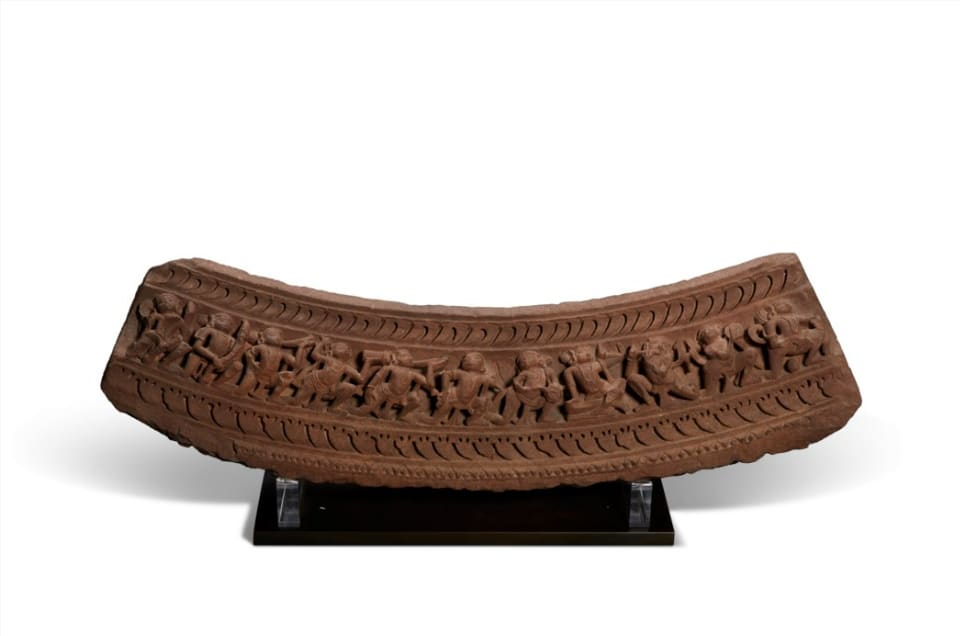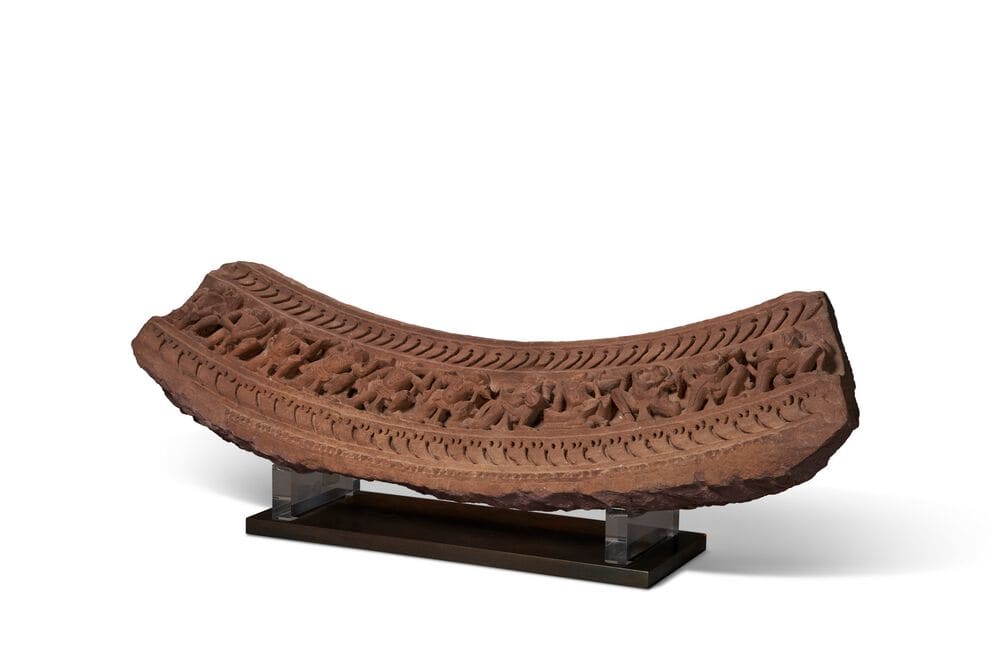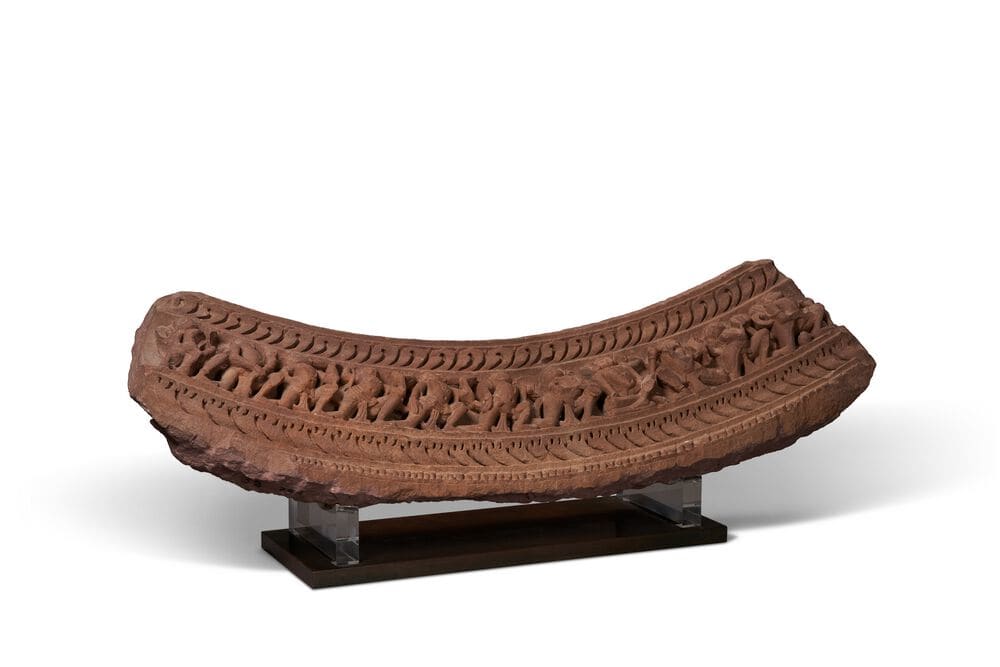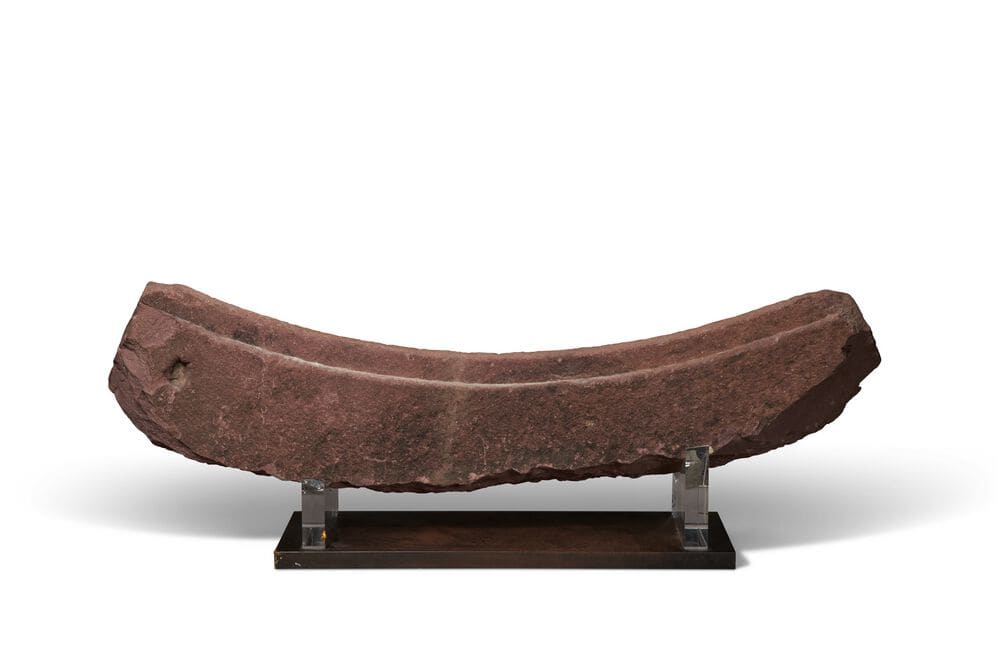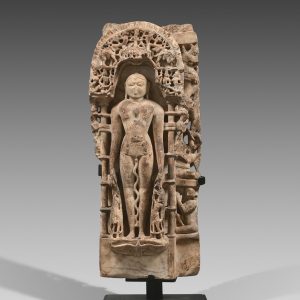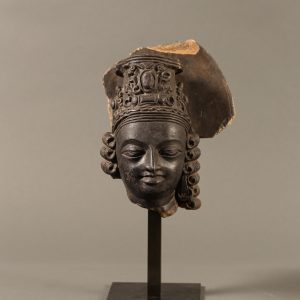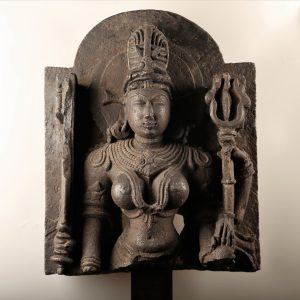Frieze with musicians
Red sandstone
India, Rajasthan or Madhya Pradesh
11th century
Width : 104,1 cm
Description
Made of red sandstone, this frieze is decorated with a celestial procession of eleven musicians, and bears witness to the flourishing artistic production in India during the medieval period.
A sacred musical scene
In full performance, they adopt very stylized poses, which contribute to the dynamism of the representation. Most of them have one knee on the ground, while the other leg is bent perpendicular to the ground. They hold various instruments, including cymbals, horns, flutes and drums.
The circular shape of the frieze indicates that this element originally decorated the dome of a religious structure, a space corresponding to the border between the profane and sacred worlds.
The sculptors were inspired by a real orchestra to create the representation of a celestial musical procession. Thus, a connivance is created with the faithful since it brings this scene closer to certain events of its daily life.
Religious dynamism in medieval India
Created in the eleventh century, this work is part of a context of architectural frenzy. Indeed, many Hindu temples and sanctuaries were erected in central India during this period. This phenomenon goes hand in hand with the political fragmentation of this region. Under the impulse of dynasties that shared the power, many architectural complexes were built, before the territory came under the Muslim yoke during the establishment of the Delhi Sultanate. One of the most famous examples of this effervescence is the complex of Khajurâho, known worldwide and where we find the same stylization of forms, the same dynamism of the bodies. Indeed, the sculpture of central India in the medieval period presents a lot of vivacity, while abounding in rich details.
The reign of expressiveness
The musicians have particularly expressive faces, with stylized and round contours, with large eyes under wide eyelids. They sketch meditative smiles, appropriate to their divine status. They are adorned with jewels and ornaments such as stoles and earrings in the shape of a disc, reinforcing the precious side of the representation.
The narrative register is delimited by two decorative friezes of deeply incised stylized petals. In the lower part, a fine frieze with chevron motifs closes the representation.
Provenance : Sotheby’s auction in New-York, 1985.

